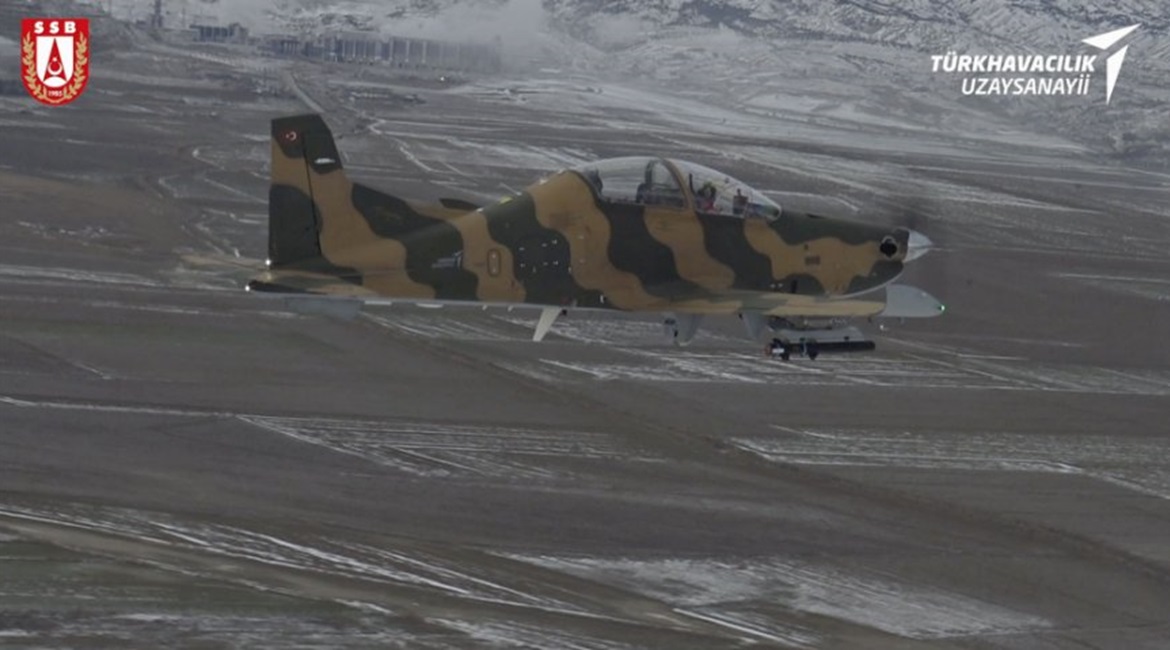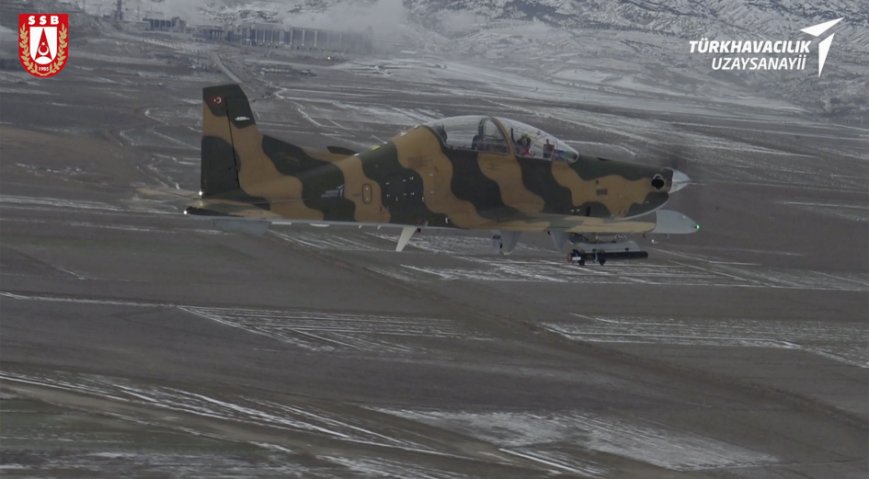
An example of Turkey’s locally developed Hurkus-C basic trainer/light attack aircraft with electronic warfare systems installed has successfully completed flight and firing trials, Turkish Aerospace Industries (TAI) announced on Twitter on 29 December.
This was the first flight of the Hurkus-C carrying weaponry and defensive systems to facilitate close air support missions, Ismail Demir, head of the Presidency of the Turkish Defence Industries (SSB), said in an interview with CNN Türk on 29 December.
In 2017 the type conducted its first firing test with a local Roketsan-made Lumtas laser-guided long-range air-to-surface anti-tank missile. The Hurkus-C, which features five hardpoints and has a 1,500 kg payload capacity, can also deliver other locally developed munitions, including Cirit laser-guided 70 mm rockets and freefall bombs fitted with Teber INS/GPS-aided laser guidance kits. Additionally, it can be armed with general-purpose bombs as well as 12.7 mm and 20 mm gun systems, according to the SSB.
Under a Turkish military request the Hurkus-C will also be able in future to carry heavier munitions, according to Demir. Twelve Hurkus-Cs, with a follow-on option for 12 more, are currently planned for production.
“The objective of our Hurkus-C aircraft, equipped with an armoured structure, self-protection systems, night-vision-compatible digital/glass cockpit and advanced avionics systems, is to undertake light attack and armed reconnaissance missions as well as carrying out pilot training requirements at a low cost and with high precision,” said an SSB release posted on its website. “Our aircraft will also have digital secure communications, image and data connections and a thermal imaging/sighting system.”
Video and data can be relayed from a Hurkus-C to a ground station in real time, according to TAI.

Looking to read the full article?
Gain unlimited access to Janes news and more...






